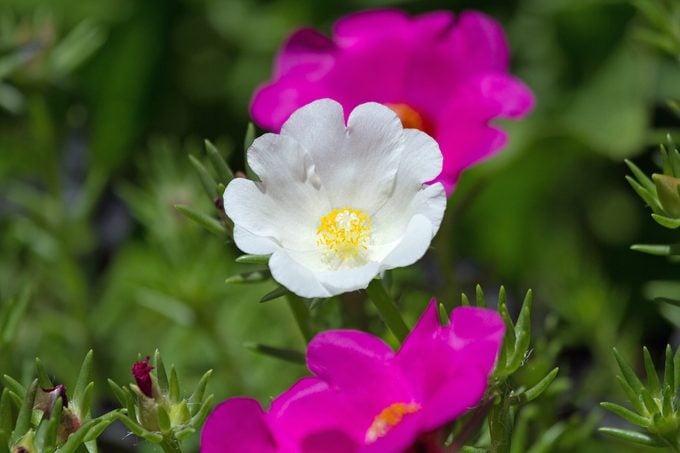Moss Rose Care and Growing Tips
Updated: Jun. 07, 2023
Moss rose plants produce colorful flowers in that open in the sunshine. These annuals look gorgeous in containers or as a ground cover.
How to Grow Moss Roses

- Moss rose
- Portulaca grandiflora
- Annual
- Light needs: Full sun
- Soil: Sandy and/or rocky well-draining soils
Moss rose, a member of the purslane family (not the rose family), grows to create a mat that is 3 to 8 inches high and up to 1 foot wide. It makes for a stunning spiller in a hanging flower basket or as a ground cover in your rock garden. Give these annuals full sun—the blooms open only in daytime before closing back up in the evening.
These plants are drought-tolerant, but you’ll want to give them a good watering once a week in hot, dry summer conditions. They will not thrive in wet, soggy soils.
Why we love it: The ruffled petals come in a wide array of colors including yellow, pink, white and red. Try the Fairy Tale series for fluffy pompom-like flowers or grow Sundial for blooms that stay open longer during the day.
Check out the top 10 fast-growing annual flowers.
Ask the Experts: Moss Rose Color Change

“Pink moss roses have come up every year in our flower bed for the past 15 years. This is the first time we’ve ever seen a white flower produced. What are the chances it will continue to come up as a white bloom in the future?” asks reader Deborah Whiting of Midland, Texas.
Horticultural expert Melinda Myers: Moss roses are self-seeding annuals that can return to the same general location for many years. Hybrid cultivars do not always produce duplicate offspring. Cross-pollination and mutations also result in changes in flower color, plant size and growth habit.
The white flowers may continue to appear and produce additional white offspring, or this may have been a one-time occurrence. Enjoy the surprise!
Next, learn how to grow annual gomphrena in your flower garden.




















